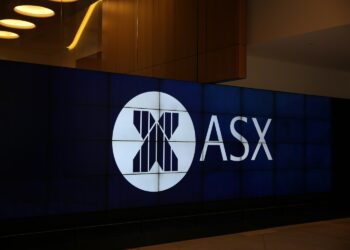Rachel Whittaker, head of sustainable investment research at Robeco, has outlined the challenges practitioners face in sustainable investing, including whether to put greater emphasis on the environmental or social factors.
She noted that the Sustainable Development Goals (SDGs) are described as “a shared blueprint for peace and prosperity for people and the planet” and has placed humanity at the heart of sustainable development. Indeed, social goals have slightly outnumbered environmental goals and appeared earlier in the sequence.
“Yet, sustainable investors could be forgiven for thinking that solving environmental issues is a higher priority than solving social issues,” she said.
While the majority of sustainable investment funds focus on a wide range of environmental, social and governance (ESG) issues, environmental topics such as climate change, water scarcity, ocean health, and biodiversity are now receiving a much higher share of investor attention as the sustainable and impact investing market has matured, compared to social issues such as human rights, workplace conditions, access to finance, education, and healthcare.
For example, sustainable and ethical fund databases have revealed a typical pattern, with 12 per cent focused exclusively on environmental issues and just 3 per cent exclusively on social issues, according to Ms Whittaker.
“The pattern is not new – MSCI launched its first environment themed equity index in 2009 – but it was 2016 before an index focused on social issues (the Women’s Leadership index) appeared in its ESG index family,” she said.
In the bond market, the first “official” green bond was issued in 2008 by the World Bank, with the proceeds committed solely to environmental projects, while the International Capital Market Association (ICMA) introduced the green bond principles in early 2014. While social bond guidelines followed only two years later, the volume of green bonds “dwarfed” social bonds until 2020, when social bond issuance became increasingly popular (spurred by the COVID-19 crisis).
Ms Whittaker has attributed the popularity of environmental investments compared to social issues to the fact that environmental problems such as emissions or water use are easier to define and quantify, compared to health and well-being.
“This makes it easier for sustainable investors to incorporate environmental data in a systematic way into their investment processes,” she said.
“It can also be easier to identify investable technical solutions for many environmental problems, while solutions to social problems may rely more on behavioural changes and the definition of success can vary between different cultures.
“This makes the environmental factor a popular topic for thematic investors with an interest in product impact, particularly when there is a political support for green industries.”
Regulation has also raced ahead for environmental investing than social, with work on the EU Sustainable Taxonomy beginning in 2018 and focusing almost exclusively on environmental issues, while social issues received only a brief mention of meeting minimum standards on human rights.
“Work on a Social Taxonomy finally began in 2021,” Ms Whitaker said.
“Ongoing discussions about whether the taxonomies should be separate or combined illustrate that even the experts are struggling with the same question that all investors face – how to balance all of the issues competing for our attention?”
Nevertheless, some social themes have been gaining momentum gradually, particularly gender equality, which has been rising in importance over the past decade as an investment theme. While there were only five focused public market funds in 2012, this had increased to over 50 in 2019 and assets under management totalled US$11 billion by the end of 2020.
“Recently, the gender lens investing community has begun to look closer at the interconnectivity of gender equality with environmental challenges,” Ms Whitaker said.
“Investors have been asking whether an investment or impact strategy focused on gender equality is truly meeting its goals if it does not also address the climate-related inequalities. The United Nations recognised the link between gender equality and climate change more than a decade ago.”
Ms Whitaker argued that the E and S are interconnected across the entire scope of sustainability challenges, and as such, urged investors to examine investment choices through a specific E or S lens to help investors to align with a particular set of values or goals.
“But an effective investment or impact strategy must acknowledge that no sustainability challenge or opportunity can be tackled in isolation,” she said.
“Sustainable investors can also play a role in ensuring that an adequate focus on social challenges remains high on the agenda of companies, regulators and governments, through voting, engagement, and involvement in financial industry initiatives.”
To hear more about ESG, sustainable, and ethical investing and how advisers can conduct these conversations with their clients and meet their demands, make sure you attend the InvestorDaily 2022 ESG Summit.
Places are filling fast so click here to book your tickets and make sure you don’t miss out.







